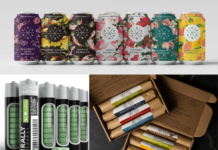
Subscribe: Apple Podcasts | Google Podcasts | Spotify | Email | TuneIn | RSS | More
In Edible-Alpha® episode #20, Tera talks with Love The Wild CEO Jacqueline Claudia. Jacqueline managed a fish farm before launching Love The Wild with co-founder Christy Brouker in 2014 to fill the gap in the market for convenient, delicious and environmentally friendly, freshly frozen seafood. Love The Wild is in the current cohort of companies in the Chobani incubator and counts Leonardo DiCaprio as an investor.
Within six months of launching their company they got their product out in front of consumers, trying out 127 product variations over an additional 18 months in just two stores, including several variations of their signature paired sauces. In addition to saving money in the long term, this trial allowed them to fully understand the market and the realities of how their product was being stored at the grocery store and consumed at home.
Once they honed in on their product, they had early success getting media attention and getting into distribution in about 600 grocery stores. However, they didn’t systematically choose which stores would be the best fit for growing their sales. Because they are offering a premium seafood dining experience but are in the frozen section, they are trying to change customer expectations and behavior, which is difficult and expensive. Demos have been essential to gain trial with consumers, and each grocery store chain has a different optimal demo/promotional schedule, required product margins and other needs to best move their product.
They sell their products directly to stores without going through brokers and distributors because they couldn’t find ones that had relationships with meat and seafood buyers, which is the category buyer that makes the most sense for them despite selling a frozen product. However, this has kept them out of some stores that can’t take pallet quantities of their product or that might be a better fit for reaching their customer base. They are currently in 2,600 stores in the United States.
The knowledgeable food entrepreneur community in Boulder helped Jacqueline understand the realistic path to building a national food brand, including meeting investor expectations and how much money it would take to grow the company’s top-line sales. However, she didn’t realize how much money they would need to spend on marketing to get customers to trial their product. Jacqueline and her partner invested $50,000 to self-fund the proof of concept for their product.
To grow their footprint, their next funding rounds were $500,000 for the next proof of concept and then a $3 million Series A round to finance growth into a small national footprint. Now that they have launched nationally, they could choose a slow-growth path funded by their operations or raise another round of financing (likely $12 – $15 million) to grow their footprint more quickly.
They set up a formal advisory board early on in their company’s development and developed a fiduciary board of directors as they began raising money for their Series A. Their board processes have helped them be more disciplined in how they collect and present information so the board and other stakeholders are informed enough to help them overcome any obstacles that they face.



